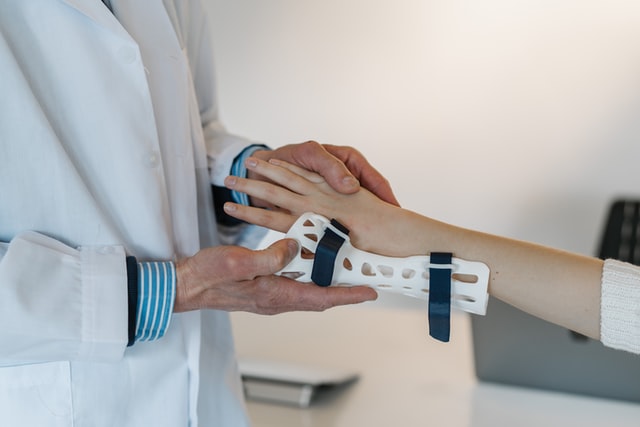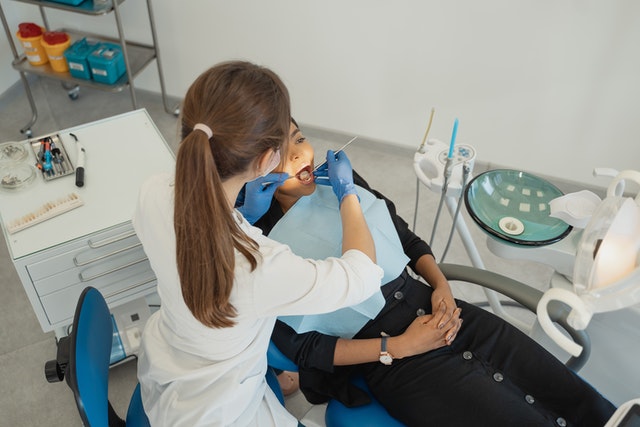The hippo was at the watering hole with the other hippos debating whether to open this article with a joke on creative ways to increase patient satisfaction by partnering with nightclubs or a joke about the Benny Benassi song “Satisfaction”. But since this hippo is new on the block, we’ll keep it sober this time around.
The other day I was getting my travel vaccines renewed and as I was waiting on the couch with just a few other patients in the lobby, I was watching a hilarious clip of Tom Segura joking about rude doctors.
That is clearly a comedy sketch and shouldn’t be taken seriously but it made me realize how fucked up it is that there is a patient segment out there that might subconsciously judge whether they liked the clinic based on if the doctor gave them good or bad news about their health.
Imagine being a doctor seeing a patient whose medical situation is dire and having to deliver the bad news knowing full well how the patient will react. Then having to deal with the patient’s negativity that deep down is about their medical situation, but instead comes out as an online complaint about the clinic.
What is a doc to do?
And more importantly, what are we to do?
We know that patient satisfaction and patient loyalty are an important part of growth, and everything when it comes to long-term revenue, yet we have little control over a patient’s emotions and ability to act on them.
I’m not convinced that it is a hundred percent solvable but we might still be able to improve it quite a bit. In this article, we’ll look at creative ways to increase patient satisfaction, which levers we have to play with, and a simple framework for finding a patient’s satisfaction level and improving upon it.
Not all creative ways to increase patient satisfaction are created equal
There are several examples of increasing patient satisfaction that seem to show up again and again around the web:
- Make the billing process easy
- Make it easy to book an appointment
- Respond fast to phone calls
- Don’t rush through appointments
- Work on the branding image
- Improve patient waiting times
- Work on patient confidentiality
Some make more sense than others. For example, patient confidentiality is a huge deal: even if we were to fix a potential breach, it’s challenging to persuade a former patient to return if their confidence is broken.
And, when was the last time you heard a patient complaining that they don’t like your brand image?
Rarely do we sit down and think about how much we love the brand. I’ve found that it is one of those things that has to be decent so as not to weigh down on the overall experience, but going above and beyond doesn’t really make a major impact on patient satisfaction.
Once we’ve solved these starter ideas, we can dive into more creative ideas to extract more impact.
Creative ways to increase patient satisfaction #1
One of the hardest but most impactful and creative ways to increase patient satisfaction is working on the experience that the physician gives the patient.
I’ve been fortunate enough to see how some doctors blow their patients out of the water by being particularly attentive, and how much additional business it can lead to in terms of loyalty compared to physicians who aren’t.
I’m guessing (take this with a grain of salt–or as hippos prefer, a pile of mud) that we feel a closer personal connection to the physician and want to get their advice again in the future since it feels like they truly care about our health. As patients, we seem to become more loyal to the doctor like we’re able to with another human, more so than we can ever be to a brand.
This comes down to people and charisma skills, and are virtually impossible to train unless the person themselves are highly interested to the point of seeking it out themselves.
An alternative to training is hiring for that type of skill set but in my experience, you’ll run into the same problem: there are so few that possess what we are looking for that it will be challenging to scale if we can only hire when we find them (provided that they also want to come work with us).
Creative ways to increase patient satisfaction #2
Another idea is a different take on reducing patient wait times. At some point, we’ve already cleaned out the easy wins like optimizing the patient flow through different service steps and or bottlenecks in tech, but sometimes that’s still not enough.
An alternative is to reposition the wait times to something more productive for the patients. For example by offering them something as simple as a handout explaining the process they are about to go through with a vitals check first, then their examination and the recommended process for following up depending on the care specialty.
If your startup has an ecosystem with other types of services, this could be a terrific time to point that out as well. Alternatively, it can also be an opportunity to educate patients on tools available to reduce no-show rates in the future such as by offering them waitlists, text reminders, and opportunities to jump on a last-minute open slot if they are interested.
Not all ideas are created evenly and if we don’t understand the root of the problem, we might spend a bunch of energy fixing stuff that doesn’t matter. Instead of diving right into executing random ideas, there’s a simple framework we can use to figure out what best to dive into first.

Find patients’ level of satisfaction and improve it with this simple framework
In order to drive the most impact on patient satisfaction, we first have to understand exactly why they are not excited. In other words, we first have to understand where we are before we can figure out where we want to go.
A good place to start is by running an NPS survey for a few weeks along with having someone on your team gather any online reviews and update them in a sheet on a weekly basis. I suggest categorizing the reasons into overarching groups so you can quantify them and get a sense of which things patients are most unhappy with — I like to think that there is five-ten times the number of people who feel the same but didn’t post a review.
Run a weekly meeting where you review the customer feedback and work with the team on implementing solutions to fix each complaint item that plays a major part in the overall feedback.
In my experience, you might encounter several items on your list that won’t have a one-off fix but rather require a change in process and habits over time, which makes the weekly review so important.
For example, if you notice that the patient experience and hospitality is one of the top complaints, implementing lasting and impactful changes will take time because we either need to tweak and train the staff’s habits or hire new staff with those skills directly. Just like changing our own eating or training habits takes time, so does our staff’s.
Different patient preferences — one solution does NOT fit all
With the important weekly process out of the way, this is a good time to bring up an important point: patients don’t always have the same preferences toward our services.
In fact, many have different values that we need to cater to. For example, some patients value the convenience of having medicine shipped directly to the doorstep after visiting a clinic while others prefer the more affordable solution of organizing it themselves.
In order to make our patients the happiest and drive patient loyalty, we need to understand their preferences and values in a similar fashion to when we do product research.
Pricing can lead to low patient satisfaction but I’ve noticed that it’s sort of a trick item since it can’t stand alone and has to be compared with the benefits it sells. People a lot smarter than I argue that it can mean that the customer doesn’t value the product’s benefits more than the value of their money.
Let’s take a simple example where we’re in the mood to munch on a delicious apple. We visit the hippo’s apple stand and the hippo tells us that there are rotten apples for sale at 50% off. Our response naturally is that we don’t want rotten apples, even at a discount.
The hippo counters with an even BIGGER discount — 75% OFF!
Our argument still stands: it’s still a rotten apple we can’t eat and so it has no value to us, no matter the price.
Patients feel the same if the product we offer doesn’t fit their preferences. Instead of judging the benefits, they get against its price, they only look at the price and feel like it’s expensive to pay for something they don’t care about.
I think we can all agree that even a good deal we don’t care about feels expensive.
Two ways to break down patient satisfaction
I’ve always found that breaking problems down into smaller components makes them easier to solve fast.
In my research on customer service and what we can adopt from the hospitality industry, I discovered there are two ways they look at improving patient satisfaction: during the appointment at the facilities and when they are not, such as before/after scheduled appointments.
In order to satisfy unhappy customers in the hospitality industry, their goal is to fix the problem before the guest leaves the premises as it’s easier and faster to retain a good experience. That is a lot harder at a clinic since they might only be there for an hour or two compared to at least one night at a hotel but the idea is something to strive for nonetheless.
At the clinic facilities, for example, we can break it down even further:
- Long wait time, overbookings and potentially a crowded waiting area
- Front desk staff not offering a good service experience
- The clinical facilities and its aesthetics
- Physician/medical quality
- Physician charisma
The patient experience before and after a patient visits the facilities may be a bigger challenge as there are more factors outside our control. The breakdown might not be as obvious as at a clinic itself and they may even look more like product questions:
- Clinics being too far away to make it seriously inconvenient
- Physician charisma
- Whether the patient has relatives using the clinic too
- Is the patient’s problem something small that can be fixed virtually to make life easier for the patient?
You’ve probably noticed that I added physician charisma in both categories and that is because while doctors will obviously be available at the clinic, some tech startups also offer patients to speak to doctors digitally via telemedicine or instant messaging services.
Takeaways
- Creative ways to increase patient satisfaction for one patient don’t necessarily work for other types of patients as well, as different patient segments have different values and preferences
- Items that have a big impact tend to require changing habits in staff, which takes time and is challenging to hire for
- Breaking the problems down tend to make them easier to fix fast
